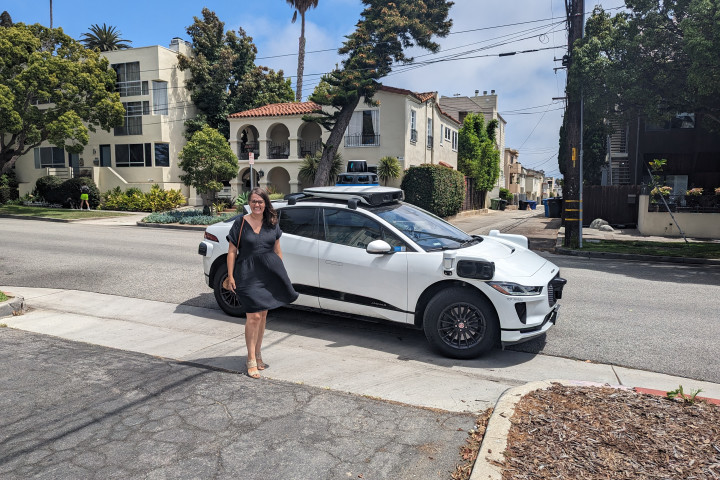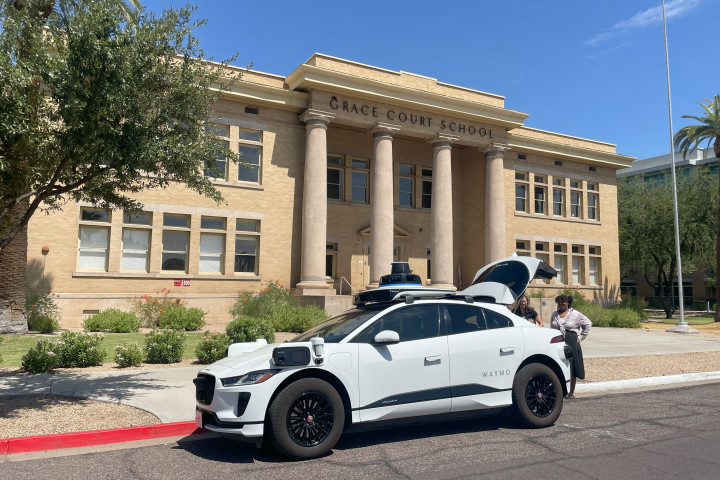The Dangers of Drowsy Driving and How to Prevent It: A Chat With National Sleep Foundation CEO John Lopos
December 7, 2021
Partnered with The National Sleep Foundation

As the pandemic stretches past its 18th month, the number of daylight hours in the Northern Hemisphere decreases, and the holidays speed toward us, there are many reasons people might feel tired and fatigued.
When that feeling comes from a lack of sleep, it’s a powerful signal from our bodies to get the sleep we need and not to drive. Drowsy driving is disturbingly common, incredibly risky and entirely preventable.
Let’s Talk Autonomous Driving spoke with John Lopos, CEO of the National Sleep Foundation (NSF), to hear how the organization raises awareness about the risk of getting behind the wheel when we haven’t slept enough.
What is the National Sleep Foundation and how did you all begin your advocacy around drowsy driving?
John Lopos: National Sleep Foundation is a national nonprofit that has been focused on educating the public about the importance of sleep for our health and well-being for over 30 years. We launched our first drowsy driving prevention efforts in the early 1990s because we understood people weren’t prioritizing their sleep and were getting behind the wheel to drive while not fully alert. This kind of impairment was a massive risk not just to themselves and their passengers, but also to anybody else who was sharing the roads. We began working with various state and federal agencies to educate the public about the risk of drowsy driving, because NSF wanted to shed light on the under-recognized problem of sleep-related crashes on the road. Then, 14 years ago we officially began our Drowsy Driving Prevention Week®.
This year, NSF received support from industry stakeholders like Jack Cooper, Schneider National, and Waymo for its 2021 Drowsy Driving Prevention Week® efforts. In addition, the National Safety Council and Drowsy Driving Prevention Project, along with many other organizations, helped promote the NSF’s sleep health and road safety messages.
What are the goals of your Drowsy Driving Prevention Week®?
John Lopos: First, driving while drowsy is a very relatable experience. Many people who drive know what it feels like or even have their own story about a time they weren’t fully alert behind the wheel because they were tired. We need to understand that the results of driving while drowsy can be tragic, just like drunk, drugged, and distracted driving. NSF works to educate the public about the common causes of drowsy driving and the symptoms of what driving while drowsy feels like. The goal is to encourage the public to take the necessary steps to be well-rested before driving in order to stay alert on the road.
How common is drowsy driving? Are there any statistics about the rate of drowsy driving or how much it is a factor in crashes?
John Lopos: Drowsy driving is all too common. In a broad survey of adult drivers, the NSF found that more than half (60%) reported driving while drowsy in the past year. The survey also revealed something even more shocking: The percentage of adults aged 18 and over who said they had fallen asleep while driving in the past 30 days translated to more than 10.3 million people.
The impact of drowsy driving is real, and the data proves it. According to a study by the AAA Foundation for Traffic Safety, 328,000 police-reported crashes each year are caused by fatigued drivers, resulting in conservative estimates of 6,400 fatalities and 109,000 injuries.
What are the warning signs of drowsy driving and how can people recognize it?
John Lopos: Everyone requires a certain amount of quality sleep each day for them to feel refreshed and function well, and so any driver can be at risk for experiencing a decrease in alertness or microsleeps when they haven’t had adequate sleep (both in terms of quality and quantity).
Young people, shift workers, commercial drivers, people with untreated sleep disorders, or those with short-term or chronic sleep deprivation have been shown to be at increased risk for having a fall-asleep crash.
Every driver can look out for these key signs that may indicate that he or she is not alert enough to drive:
- Difficulty focusing, frequent blinking, or heavy eyelids
- Daydreaming; wandering/disconnected thoughts
- Trouble remembering the last few miles driven; missing exits or traffic signs
- Yawning repeatedly or rubbing your eyes
- Trouble keeping your head up
- Drifting from your lane, tailgating, or hitting a shoulder rumble strip
- Feeling restless and irritable
What are the risk factors for drowsy driving?
John Lopos: There are a number of activities that can raise the risk of drowsy driving. Missing hours of sleep that we would normally get (called sleep debt) or being fatigued can put us at risk for drowsy driving.
During the holidays, people may be on the road for longer periods traveling to destinations that are farther away, or out of their normal routine. College students and teenagers who are the highest risk group for drowsy driving may be driving hours back and forth to college or school. These activities can put us at risk. Driving long distances without proper rest breaks, or driving during times you would normally be asleep, or driving alone on long monotonous roads are all risk factors for drowsy driving.
How much and how we work can also put us at risk. Working more than 60 hours a week increases your risk of drowsy driving by 40%, and working more than one job or doing shift work can also be a risk factor.
It’s important to be aware that drinking even small amounts of alcohol can make us drowsy, even if we are below the legal allowable blood alcohol level for driving. Taking sedating medicines (antidepressants, cold tablets, or antihistamines) can also make us drowsy and compromise our ability to safely drive.
How can drowsy driving be prevented?
John Lopos: Preventing drowsy driving is one safety issue where culture can change when people are “in it” together. When we’re on the road, we have a responsibility to each other before getting behind the wheel, which is why people remind or educate each other about safe practices, including preventing different forms of impaired driving.
The NSF recommends that most adults get between seven and nine hours of quality sleep each day to feel refreshed and function well. Teenagers should get between eight to ten hours a night.
Other tips for reducing drowsy driving include scheduling proper breaks about every 100 miles or two hours during long trips. Driving with a travel companion who you can talk with and share the driving can also help.
How could new road safety technologies like Waymo’s fully autonomous driving help reduce drowsy driving in the future?
John Lopos: The NSF believes the safest, proactive practice to reduce the effects of drowsy driving starts with a driver having had adequate sleep before getting behind the wheel. It’s important for both drivers and passengers to take steps to lower risks of driving while tired.
In addition to getting the sleep we need, new road safety and driving technologies could also help support efforts to reduce drowsy driving. Autonomous driving could become generally available as a safer option than a person attempting to drive themselves when they haven’t had sufficient sleep to be fully alert.
Now is a great time for leaders in the automotive and mobility industries to add their voices to the overall effort to prevent drowsy driving. Like many, we’re excited to see how fully autonomous driving develops and what it could mean for the future of mobility.
Thank you for speaking with us, John, and thanks to the National Sleep Foundation! We at Let’s Talk Autonomous Driving look forward to a time when drowsy driving is a thing of the past.
Sign Up
Join us in the most important conversations about how autonomous driving technology may shape the future of safety, mobility, community, and society.


